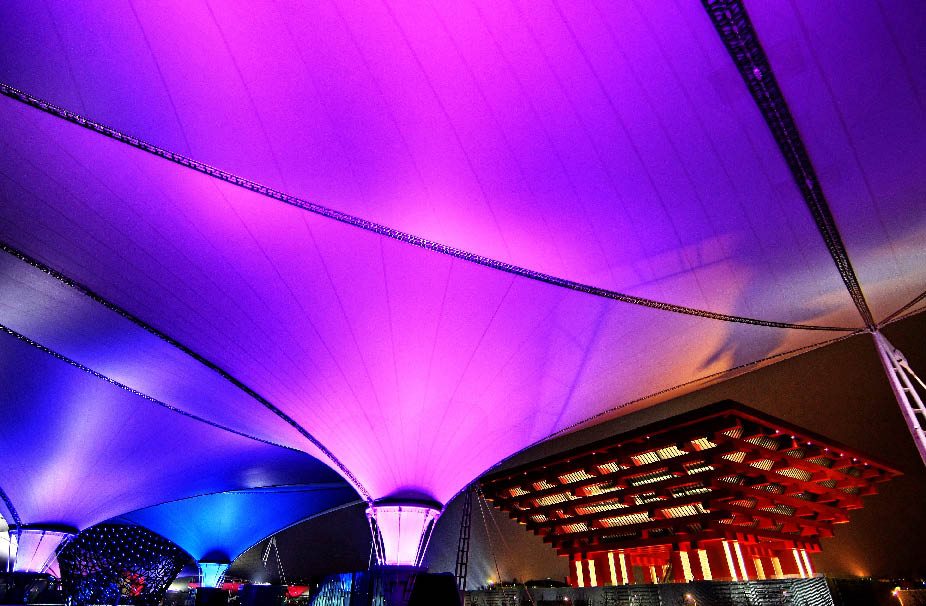By staff reporter LI WUZHOU
For nations and technology enterprises of the world there are few better occasions than the World Expo to draw attention to their latest achievements in science and technology. In fact, fancy gadgets that will eventually glamorize the average home are always among the most anticipated by the event's attendees. The following are a mere fraction of those introduced at the Shanghai Expo.
Anything Low Carbon
 |
| The Expo Axis |
Low carbon is a hallmark of the design and operation of the Shanghai Expo. The white bugle-shaped columns on the Expo Axis funnel sunshine, fresh air and rainwater into an underground labyrinth where they sustain lighting and ventilation and provide naturally-sourced water for half the needs of the Expo complex.
Garbage produced in the permanent buildings of the Pudong section of the Expo is transferred through a system of pneumatic pipelines to be sorted and recycled by computer.
Transport is completely green. Three types of vehicles roam around the Expo zone: trolley bus, super-capacitor shuttle and a hybrid car running on both super capacitor and battery.
The National Pavilion of Japan is poised to be judged the most intensively hi-tech of all its peers. Highlights include a machine to turn sewage into drinkable water via biological materials, membrane bioreactors (MBR) that conduct highly refined separation of activated sludge, a reverse osmosis membrane system that converts seawater into fresh water, a floor that generates electricity with your every footfall, window panes covered with hair-thin solar panels, and a technology that can single out carbon dioxide from factory emissions.
Another venue to get a glimpse of mankind's effort to cool down our planet is the Urban Best Practices Area (UBPR). The two carbon-neutral buildings contributed by London are powered, heated and cooled via the biomass CHP (combined heat and power partnership) technology, which decomposes kitchen waste and one-off tableware to produce energy. The residues from this process can be used as bio-fertilizer, leaving nothing squandered at the end of the cycle.
Hamburg House is also an outstanding sustainable construction project. Its exterior is a blend of special bricks and three-layer glass curtains, keeping the interior warm in winter and cool in summer while allowing the maximum amount of natural light to penetrate. The house consumes only 50 kilowatts of energy per square meter each year, a fourth of what the average traditional office building burns through.
| 